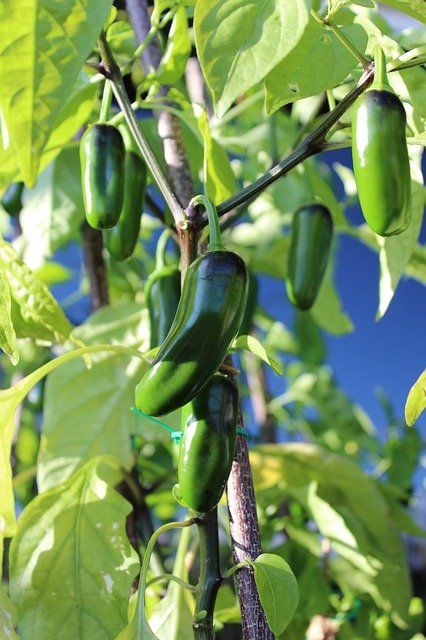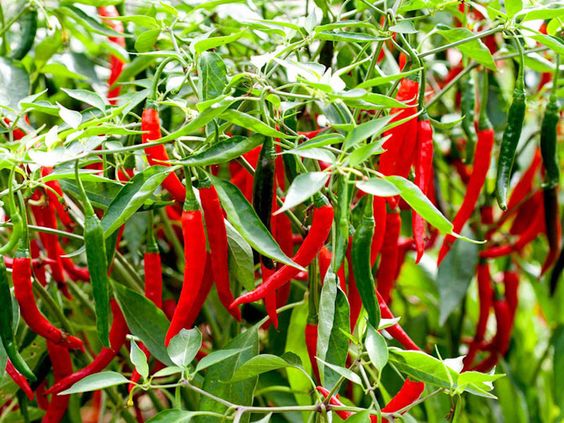Smart Agriculture Revolution: A Guide to Planting Jalapeno Peppers with Precision
Planting Jalapeno peppers, a staple ingredient in countless cuisines worldwide, are known for their vibrant flavor and fiery kick. Cultivating these peppers can be a rewarding experience for both home gardeners and commercial farmers. However, maximizing jalapeno yield and quality requires a strategic approach. This article delves into the exciting world of Smart Agriculture, exploring how technology can revolutionize jalapeño pepper cultivation. We’ll delve into the benefits and objectives of Smart Agriculture, explain the key technologies involved, and provide a step-by-step guide to planting jalapeno seeds using these methods.
Contents
Benefits of Smart Agriculture for Jalapeno Farming
Smart Agriculture, also known as Precision Agriculture, integrates information and communication technology with agricultural practices. By leveraging data-driven insights, farmers can optimize resource utilization, minimize environmental impact, and ultimately, achieve higher yields and superior quality crops. Here’s how Smart Agriculture empowers jalapeno growers:
- Enhanced decision-making: Sensors monitor soil moisture, temperature, and nutrient levels, providing real-time data to guide irrigation, fertilization, and pest control strategies.
- Improved resource efficiency: Precise application of water and fertilizers reduces waste and ensures optimal plant growth.
- Reduced environmental impact: Smart irrigation minimizes water usage, while targeted pest control strategies lessen reliance on chemical pesticides.
- Early detection of problems: Sensors can identify disease outbreaks or nutrient deficiencies at early stages, allowing for prompt intervention.
- Increased yield and quality: Optimized growing conditions lead to healthier plants with higher yields of high-quality jalapenos.
Objectives of Smart Jalapeno Farming
The primary objectives of employing Smart Agriculture in jalapeno farming are:
- Maximize yield: By creating ideal growing conditions, Smart Agriculture fosters optimal plant growth and fruit production.
- Improve quality: Precise control over environmental factors leads to jalapeños with consistent size, color, and spiciness.
- Reduce waste: Smart irrigation and targeted pest control minimize water usage and reliance on chemical pesticides.
- Enhance profitability: Increased yields, improved quality, and reduced waste contribute to higher profits for farmers.
- Promote sustainability: Efficient resource utilization and reduced environmental impact ensure sustainable jalapeño farming practices.
Explanation: Key Technologies for Smart Jalapeño Farming
Several key technologies underpin Smart Agriculture practices for Planting Jalapeno cultivation:
- Sensors: These devices collect real-time data on various environmental factors, including soil moisture, temperature, humidity, and nutrient levels.
- Wireless connectivity: Sensors transmit data wirelessly to a central hub or cloud platform for analysis and visualization.
- Internet of Things: A network of interconnected devices (sensors, actuators, etc.) that collect, share, and analyze data to automate tasks.
- Big data analytics: Advanced software analyzes vast amounts of data collected from sensors to identify trends and patterns, enabling informed decision-making.
- Artificial intelligence: algorithms can learn from historical data and sensor readings to predict crop health, optimize resource allocation, and identify potential problems.
Planting Jalapeno Seeds with Smart Agriculture Techniques
Here’s a step-by-step guide to planting jalapeno seeds using Smart Agriculture principles:
-
Soil preparation: Utilize soil testing kits to determine baseline nutrient levels in your planting area. Based on the results, amend the soil with organic matter or fertilizers as needed to create a well-draining, fertile environment for your jalapeno plants.
-
Smart seeding: Employ smart planters equipped with sensors that monitor soil moisture levels. These planters can automatically trigger irrigation when needed, ensuring optimal moisture for seed germination.
-
Precision irrigation: Utilize drip irrigation systems that deliver water directly to the root zone of the plants. This minimizes water waste and ensures efficient moisture delivery.
-
Data-driven fertilization: Leverage soil sensor data to determine the precise nutrient needs of your jalapeno plants. Apply fertilizers based on this data to avoid over- or under-fertilization.
-
Environmental monitoring: Utilize weather stations or consult weather data from reputable sources to anticipate changes in temperature, humidity, and precipitation. This allows you to proactively adjust irrigation schedules or implement frost protection measures if necessary.
-
Pest and disease management: Planting Jalapeno Smart traps equipped with sensors can detect the presence of pests in your jalapeno crop. This enables early intervention with targeted organic or biological pest control methods, minimizing reliance on chemical pesticides.
-
Yield and quality monitoring: Planting Jalapeno Utilize smartphone apps or cloud-based platforms that integrate sensor data with historical yield information. This allows you to track plant growth, predict harvest times, and ensure consistent jalapeno quality.




